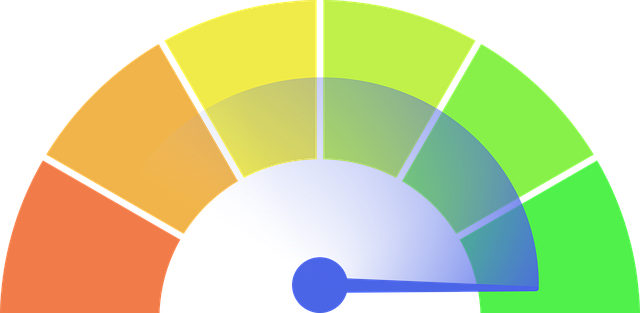A well-defined site structure is essential for effective SEO, organizing content hierarchically to enhance user experience and improve search engine indexing. Internal linking, a powerful SEO strategy, involves optimizing site structure by using relevant anchor text, prioritizing information flow, and creating logical categories. Best practices include understanding audience needs, maintaining clear navigation, using descriptive anchor text, and balancing link equity. An SEO audit using tools like Ahrefs helps identify areas for improvement, guiding the development of an effective internal linking strategy. Measuring success through KPIs in Google Analytics tracks user behavior metrics, enabling adjustments to optimize site structure and boost SEO efforts.
In today’s digital landscape, understanding site structure is paramount for successful modern SEO. This comprehensive guide delves into the core principles of using internal linking as a powerful tool to enhance search engine rankings. By exploring the impact of site architecture on user experience and search algorithms, we’ll uncover strategies to create effective internal linking structures. Learn best practices for optimizing anchor text, leveraging essential tools for analysis, and tracking key performance indicators (KPIs) to master site structure SEO.
- Understanding Site Structure and Its Role in SEO
- The Impact of Internal Linking on Search Engine Rankings
- Strategies for Creating an Effective Internal Linking Structure
- Optimizing Anchor Text: Best Practices and Examples
- Tools to Analyze and Improve Your Site's Internal Linking
- Measuring Success: Tracking KPIs for Site Structure SEO
Understanding Site Structure and Its Role in SEO

A well-defined site structure is a cornerstone of any effective SEO strategy. It involves organizing your website’s content in a hierarchical and logical manner, making it easier for both users and search engines to navigate. This strategy ensures that each page has a clear purpose and is interconnected with relevant content, fostering a seamless user experience. A strong site structure allows search engine algorithms to understand the relationships between different pages, enabling them to index your website more efficiently.
By implementing a robust site structure SEO strategy, you can enhance the overall optimization of your website. It involves creating a structured hierarchy that reflects the topics and themes within your content, ensuring each page is accessible via multiple paths. This approach not only improves user engagement but also signals to search engines that your website is well-managed and authoritative on its subject matter, ultimately boosting your SEO efforts.
The Impact of Internal Linking on Search Engine Rankings

Internal linking plays a pivotal role in modern SEO practices, significantly influencing search engine rankings. By strategically connecting relevant pages within your site, you create a robust site structure that aids both users and search algorithms in navigating content efficiently. This not only enhances user experience but also signals to search engines the importance and relevance of specific pages, leading to higher ranking potential.
Effective use of internal linking as part of your site structure SEO strategy involves incorporating relevant anchor text, ensuring links are contextually placed, and prioritizing well-organized hierarchy. Site structure SEO tips suggest creating a logical flow of information that mirrors user behavior and encourages deeper engagement. Through these means, you can optimize your site structure SEO to boost visibility, drive more organic traffic, and ultimately achieve better search engine rankings.
Strategies for Creating an Effective Internal Linking Structure

Creating an effective internal linking structure is a crucial aspect of modern SEO practices. Start by understanding your audience’s navigation needs and organizing your site content in a logical, hierarchical manner. This means structuring your site with clear categories and subcategories, ensuring each page has relevant links to other related pages within the same topic cluster. A well-planned site structure not only enhances user experience but also helps search engines understand your website’s context and intent.
Implementing best practices in your site structure SEO optimization involves using anchor text that is descriptive and contextually relevant. When writing internal links, focus on keywords that reflect the content of the linked page to avoid generic or spammy anchors. Additionally, maintain a balanced distribution of link equity across your pages by ensuring no single page dominates your internal linking profile. Regularly update and review your site structure SEO tutorial to adapt to changes in user behavior and search engine algorithms.
Optimizing Anchor Text: Best Practices and Examples

Optimizing anchor text is a crucial aspect of modern SEO practices, particularly when implementing internal linking for improved site structure SEO. The anchor text, or the clickable portion of a hyperlink, should be chosen carefully to convey both relevance and context. Best practices involve using descriptive keywords that accurately represent the target page while keeping the anchor text natural and readable. For example, if you’re linking to a blog post about “SEO strategies for 2023,” the anchor text should reflect this—a simple yet effective approach that informs users and search engines alike.
A site structure SEO tutorial recommends using variations of keywords to avoid repetition across your internal links. This can include synonyms or more general terms, ensuring the anchor text remains diverse and engaging. For instance, a related post could be linked with “learn more about SEO trends” instead of solely relying on “SEO strategies.” Such diversity helps search engines understand the interconnectedness of your content, enhancing the overall site structure SEO. Remember that balance is key; avoid keyword stuffing, as it can negatively impact both user experience and search engine rankings.
Tools to Analyze and Improve Your Site's Internal Linking

To optimize your site’s internal linking, leveraging the right tools is essential. Start with a comprehensive SEO audit that analyzes your site’s current structure and identifies areas for improvement in your site structure SEO. Tools like Ahrefs, SEMrush, or Moz can help you understand how users navigate your website and pinpoint pages with low link equity or poor user engagement.
Once you have a clear picture of your site’s performance, use these insights to create an effective internal linking strategy. A well-structured site map and a strategic placement of anchor texts can significantly enhance your SEO efforts. Consider using tools that offer suggestions for improving your site structure SEO optimization, such as Google Search Console or Yoast SEO. These platforms provide valuable insights into broken links, missing content, and opportunities to create a more user-friendly and search-engine-friendly website.
Measuring Success: Tracking KPIs for Site Structure SEO

Measuring success is a crucial aspect of any SEO strategy, and when it comes to site structure SEO, tracking key performance indicators (KPIs) is essential to understanding what’s working and where improvements can be made. By analyzing these metrics, you gain valuable insights into how users interact with your website, enabling data-driven decisions for optimization. Start by monitoring user behavior through tools like Google Analytics, focusing on session duration, bounce rates, and pages per session. These metrics reveal the overall usability of your site’s structure, indicating if visitors are finding relevant content easily.
A comprehensive site structure SEO tutorial should cover setting up goals and custom dashboards to track specific KPIs related to internal linking. For instance, you might monitor the click-through rate (CTR) from internal links, which can show the effectiveness of strategic anchor text usage. Additionally, keeping an eye on the time spent on individual pages can highlight content that requires better optimization or restructuring to encourage deeper engagement. Regularly reviewing these KPIs allows for a dynamic site structure SEO strategy, ensuring your website remains not just relevant, but also optimized for user experience and search engine rankings.
